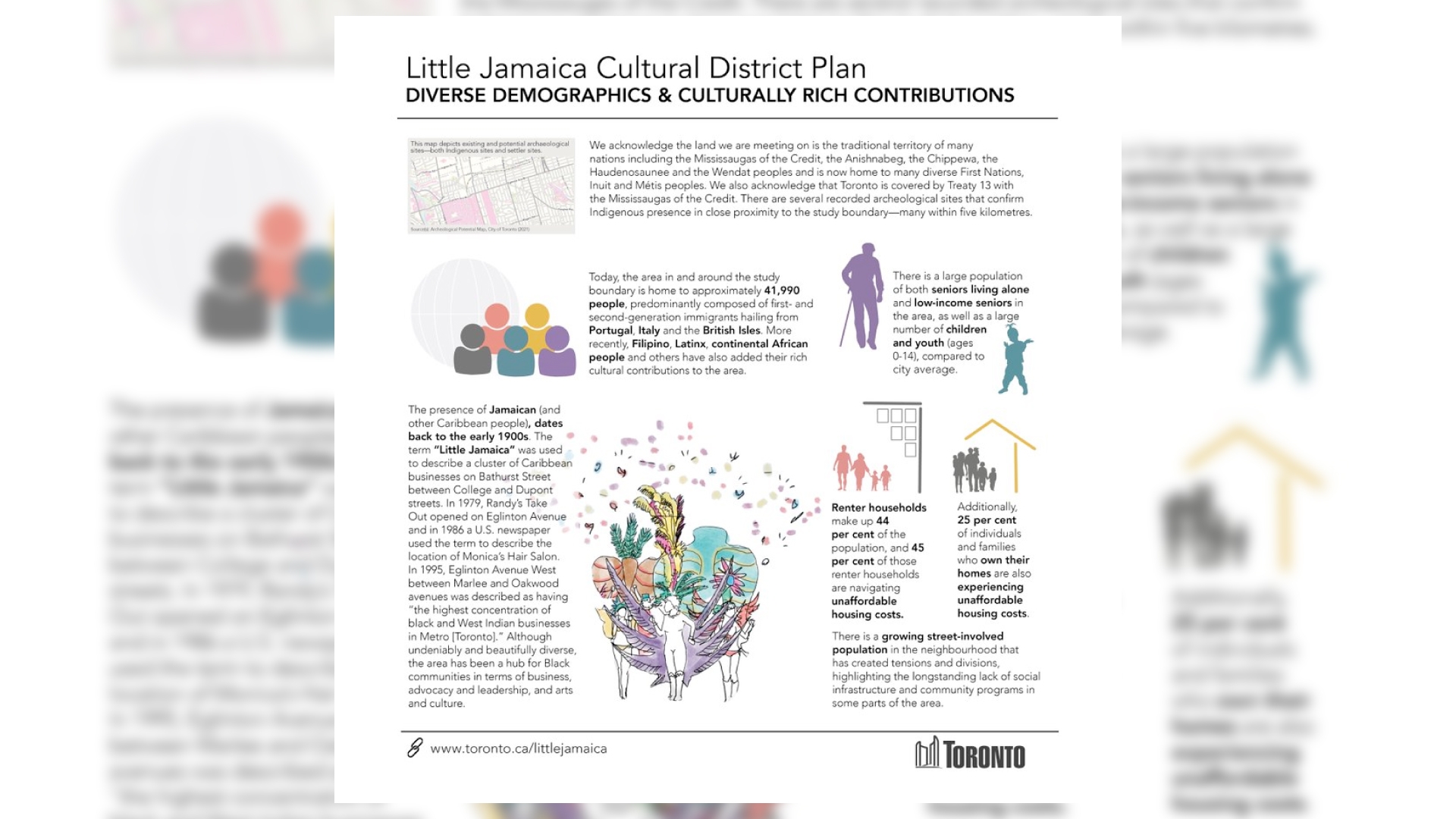BY PAUL JUNOR
It has been over two years now since the Toronto City Council passed two separate motions on September 20th, 2020, to ensure that economic policies were in place to help businesses in Little Jamaica: thrive, survive, and to develop its cultural distinctiveness.
It is vital that all stakeholders come together to reflect and act to maintain this history.
Many of the businesses along the Eglinton West corridor such as: barber shops, restaurants, music stores, recording studios, and financial institutions have been impacted by the construction of the Eglinton Crosstown LRT and the COVID pandemic.
Jay Pitter, a place maker has been hired as a City of Toronto’s consultant to lead the development of the city’s first-ever formal cultural and planning process. In order to obtain feedback from diverse community partners, several community engagement sessions were held to elicit active and viable feedback.
Jay Pitter has been working with a team that includes city staff to finalize the Little Jamaica Cultural District plan through feedback from diverse stakeholders. Public notices have been mailed to community stakeholders and hand-delivered to business owners in an attempt to connect with them. There is hope that this plan will outline a collective vision related to the design and provision of: places, spaces, and policies to guide the area’s future growth. As the first community to be part of this cultural district process, there is a need for widespread community insights and diverse participation.
On Wednesday, December 7th, 2022, there was an open house at Oakwood Village Library Auditorium at 341 Oakwood Avenue, and on Thursday, December 8th, 2022, another one was at Maria A. Schuka Library meeting room at 1745 Eglinton Avenue West. Prior to the open house, there was a youth design charrette that involved collaboration between the U of T’s John H. Daniels Faculty of Architecture, Landscape, and Design. There were contributions from 60 youths who presented ideas about the importance of youth-centered spaces that will be included in the Little Jamaica Cultural District Plan.
Jay shared “Our priorities included the need for: flexible, quiet, loud, playful, socially responsive, cross-cultural and sustainable community spaces co-created with youth in mind.”
In addition, there were two virtual meetings: one was on acknowledging Indigenity that highlighted the indigenity within the community while providing insight into respectful and meaningful approaches for intentional integration.
The second one focused on a Phase 1 Presentation & Shared Prosperity Panel. It provided a brief summary of background research and engagement activities conducted to date and their outcomes, and explored: culturally responsive approaches to fostering a wide array of local businesses, the role of businesses in fostering community cohesion, and strategies for strengthening the local economy overall.
On Saturday, December 10th, there was a Gender-Responsive Mapping workshop between 11:00 am-12:30 pm, and a 2SLGBTQ+ place making presentation and workshop between 1:00 pm and 3:00 pm at the Maria Schuka library.
Anyone interested in learning more about the Little Jamaica Cultural District Plan check:
Website: www.toronto.ca

